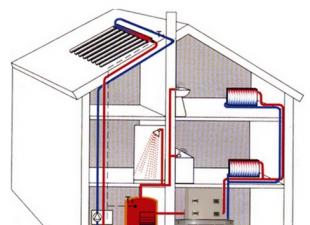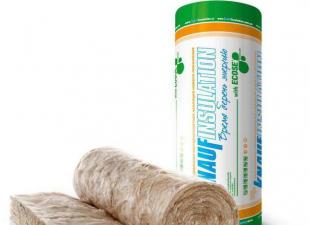A comfortable temperature in the house is often provided using porous or fibrous materials with low thermal conductivity. However, heaters that work on a different principle - on the reflectivity of a mirror surface began to gain more and more popularity. This is how foil thermal insulation works, which today is considered the most effective.
What is thermal insulation with foil
This is a combined insulation, which, in addition to the base base with low thermal conductivity, has a reflective layer of very thin, about 20-30 Å (angstrom), polished aluminum foil. This component provides the maximum effect of reflection of infrared rays, in fact, heat - up to 97%, and the base layer "takes over" the remaining 3%. Thus, the heat remains in the room.
Types of heaters
Foil thermal insulation has a variety of forms - in the form of rolls, mats, tiles, cylinders, used mainly for thermal insulation of pipes, and sizes. They differ in other respects as well.
- View of the base layer.
- foam polyethylene,
- mineral or basalt wool;
- expanded polystyrene.
- Insulation foil technology. Aluminum foil for thermal insulation can be glued or sprayed, perforated or not.
- Number of reflective layers. On some types of thermal insulation, the foil can be applied on one or both sides, on others there is an adhesive layer, that is, in addition, such thermal insulation reflects, it can be laid directly on the surface without. These heaters are labeled respectively A, B and C.
On a note
Since self-adhesive foil thermal insulation is quite flexible, it can be used for laying in corners, as well as on uneven surfaces. By gluing the connecting seams of heat insulators with foil tape, you can achieve their complete tightness.
- Appointment. Thermal insulation materials coated with foil are used both as the main thermal insulation and additional.
For those who are going to buy thermal insulation, we note that the price of foil insulation is formed depending on such parameters as:
- base material;
- aluminum foil thickness;
- height of the heat-insulating layer;
- number of reflective screens.
Advantages and disadvantages
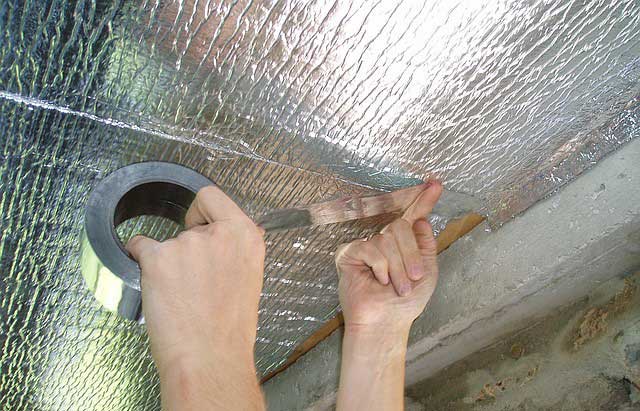
- The foil has an excellent ability to reflect thermal radiation as much as possible. On the one hand, it retains heat in the room, on the other hand, it does not let heat in, that is, a “thermos effect” is created inside.
- An additional layer of foil increases the wear resistance of the insulation.
- It has hydrophobic properties, so in some cases it can replace waterproofing.
- Heaters of this group have a small mass, are easy to cut and install. Moreover, if necessary, it can be dismantled and used again in the same or another place.
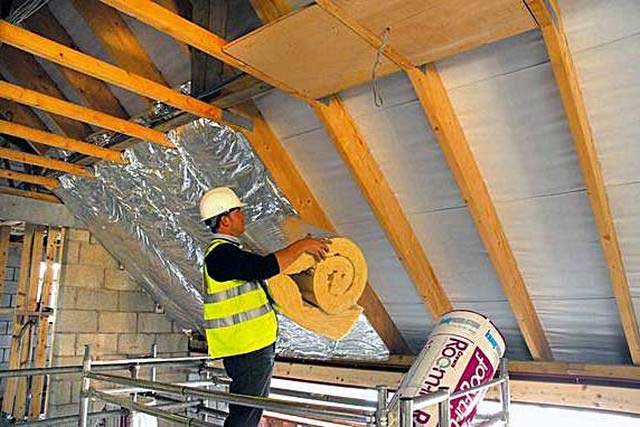
- They isolate as much as possible from external influences: they do not let the wind through, they are resistant to critical temperatures, they significantly reduce the level of noise coming from outside, etc.
- Such insulation lasts a long time, while it does not rot and does not become moldy.
- It is much thinner than conventional insulation, but much more efficient and allows you to save energy costs up to 25-30 percent.
- The foil layer not only does not create problems for human health, but also becomes a barrier to the smallest particles of the base that can penetrate into the space of the room.
- Of the minuses of heaters with foil, we note the susceptibility of aluminum to gradual corrosion. The reflective layer begins to become cloudy over time, which leads to some weakening of its main reflective qualities.
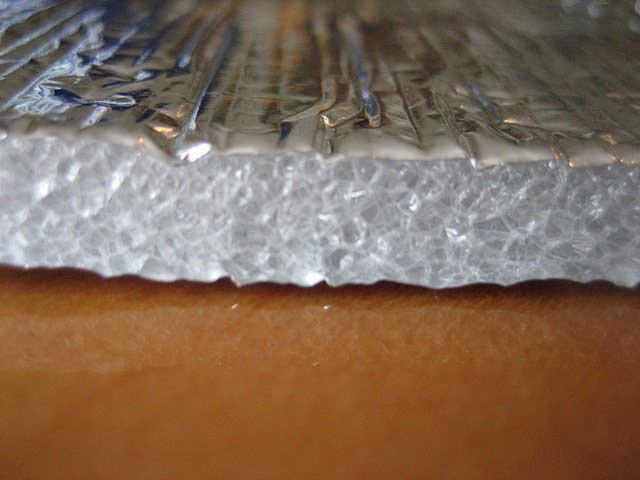
- These materials are made on the basis of polyethylene foam using a special technology. The height of the insulation layer can be very different, ranging from very thin at 2 mm to relatively thick at 15 mm. As a rule, this is a rolled foil thermal insulation. Thicker materials can be supplied in standard size sheets.
- The thickness of the foiled foil layer is 10÷15 microns.
- The technical and operational characteristics of the insulation also depend on the type of source material:
- Inexpensive grades are made from ordinary polyethylene subjected to a repeated foaming process. The result is a closed porous gas-filled structure of the new material. These heaters have a significant drawback - this is a tendency to gradual shrinkage due to low resistance to mechanical stress.
- "Cross-linked" polyethylene (the so-called PPE-based heaters) has the best strength indicators. Cross-links at the molecular level provide resistance to mechanical stress.
Their density is slightly higher. Moreover, when the dynamic action stops, the material "tryes" to restore its original shape.
On a note
Some types of foiled polyethylene foam have an additional reinforcing layer of fiberglass mesh.
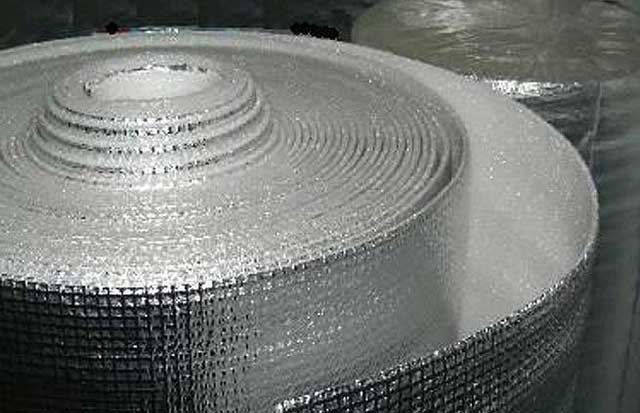
- A wide range of heat-insulating materials based on polyethylene foam is presented on the construction market. Among them, foil Penofol, Izolon, Folgoizol and others are most in demand.

- Insulation sheets are laid end-to-end and fixed to the surface, for example, using a construction stapler. In principle, you can use any other method. The main thing is that at the same time, the integrity of the foiling is not very affected. Then the butt joints are glued with foil tape.
Areas of use
- It is used as an additional or main thermal insulation layer when installing the floor, which also acts as a waterproofing layer. When laying the foil part, it should look up towards the top coat.
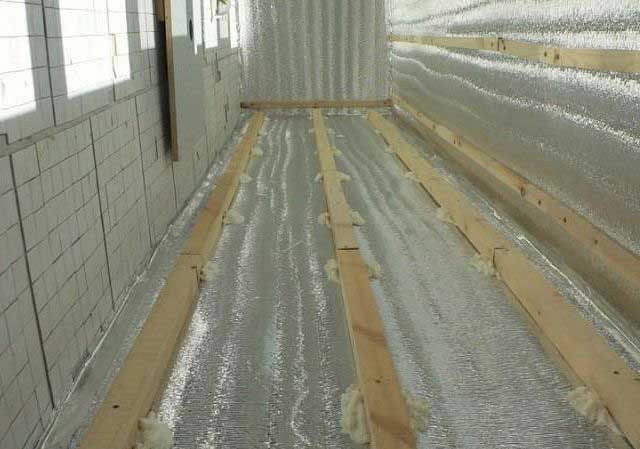
- It copes well with the thermal insulation of walls, as well as ceilings in rooms whose dimensions do not allow the use of thicker heaters, for example, on a narrow balcony (loggia). Fasten the material with a foil surface inside the room.
- It is used for insulation of roofing slopes as an independent material, and additional to others. In both cases, it is fixed with a reflective surface inside the attic room and a crate is stuffed onto it under the sheathing.
- With it, equip the thermal insulation of the bath. Simultaneously with the insulation of the bath from the inside (ceiling, walls), the issue of vapor and hydroisolation is also being solved - protecting the skin from waterlogging. For critically high temperatures, such as, say, in a steam room, such a material is not very suitable, since it is operated in a limited temperature range.
Foil mineral wool
It already has very high thermal insulation characteristics. Foiling, firstly, further increases the efficiency of insulation, and secondly, it is an additional way to protect the hygroscopic material from the penetration of excess moisture and steam, which could have an extremely negative impact on its performance.
The material goes on sale in the form of compressed rolls, sectional or individual plates, cylinders and semi-cylinders.
Application
- When thermally insulating the roof, the material is placed in the inter-rafter space tightly enough so that cold bridges do not form.
- The density of the foil is usually sufficient to be able to fasten the reflective layer to the staples. Joints must be glued with foil tape. This will help ensure the effect of hydrovapor barrier.

- The maximum operating temperature of this material is more than 300˚, so it is more than any other suitable for warming a bath. Some experts even consider this to be its main purpose. Insulating boards or mats are placed between the guides, laid with a step that is less than the width of the thermal insulation. It is obligatory to have an air gap of 20–25 mm, which is left between the thermal insulation layer and the wall and ceiling cladding.
- The heat resistance of mineral wool with foil makes it possible to use it for additional insulation of boilers, boilers and other similar devices.
- Collapsible cylindrical or semi-cylindrical thermal insulation materials made of foiled mineral wool are suitable for thermal insulation of pipelines.
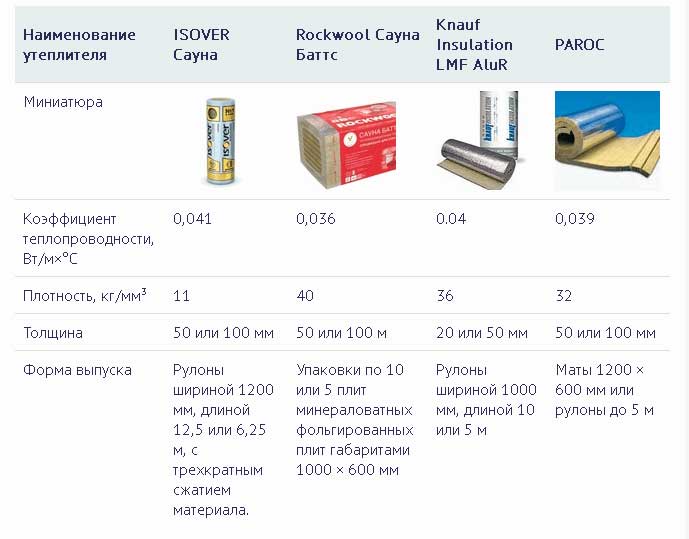
Foam polystyrene foil
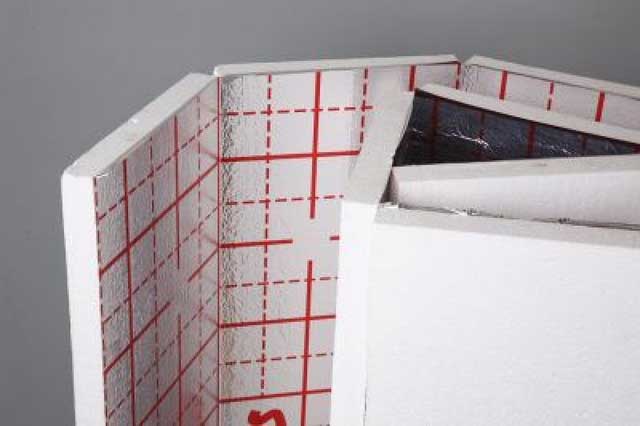
It is a durable thermoplastic obtained by fusing polystyrene granules with aluminum foil on one side. This is a strong material, resistant to significant mechanical stress and high humidity. It does not rot, biologically stable. Retains its characteristics in the temperature range from -180˚ to 180˚.
The material is often used when laying a warm floor. To facilitate this process, markings are applied to the plates at the factory. When laying the insulation, the foil layer reflects the heat flow upwards, warming up the finish coating.
 budivel.ru About the insulation and heating of the house.
budivel.ru About the insulation and heating of the house.

